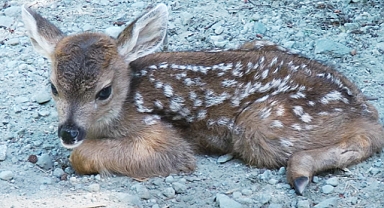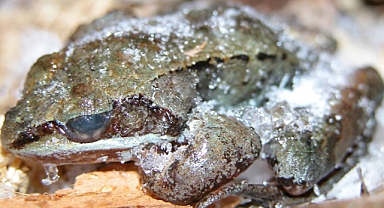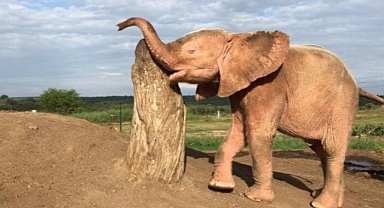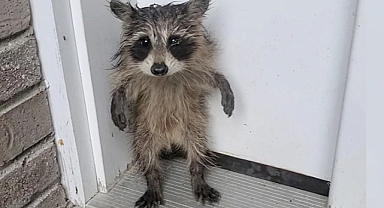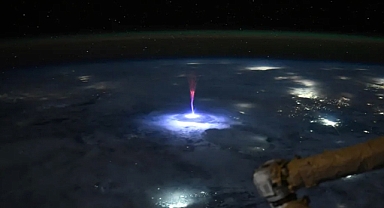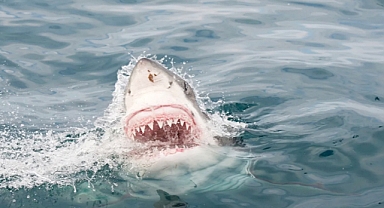Meganeuropsis permiana: The Giant Predator of the Permian This colossal insect, scientifically named Meganeuropsis permiana, was an active predator. Its size enabled it to hunt small vertebrates such as amphibians and even tiny mammals. Researchers believe the immense size of Meganeuropsis was possible due to the significantly higher oxygen levels during its time. Fossils of Meganeuropsis were first unearthed in Kansas' Wellington Formation, a rich fossil bed dating back to the Early Permian period. Fossils of this giant have also been found in various other parts of the world, including France, Russia, and China.
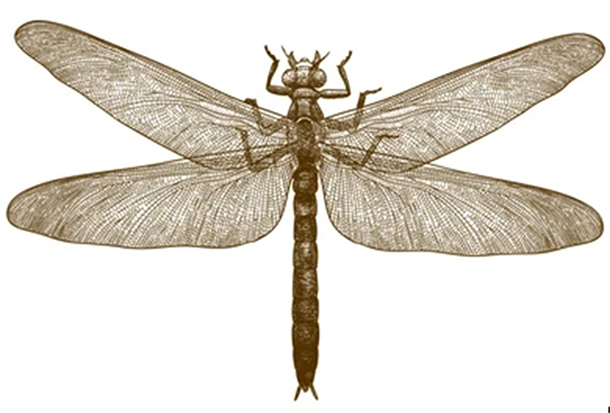 Anatomy and Habitat of Meganeuropsis permiana
Anatomy and Habitat of Meganeuropsis permiana
Belonging to the order Meganisoptera and commonly referred to as a "griffinfly," Meganeuropsis permiana is considered the largest known insect in history. It lived during the Artinskian stage of the Early Permian period, approximately 290 to 283 million years ago. This insect's wingspan ranged from 28 to 75 centimeters (11 to 30 inches), and its body size was estimated between 17 and 43 centimeters (7 to 17 inches). The massive wings were supported by a network of strong veins, which provided the necessary strength for flight.Like modern dragonflies, Meganeuropsis likely hunted by flying swiftly and grabbing prey mid-air, using its sharp leg spines for grasping. Its large eyes would have been advantageous for spotting potential prey from a distance, and its formidable size made it an apex predator among ancient insects and small animals.Why Did Meganeuropsis Grow So Large?
Theories suggest that insects of the Carboniferous and Early Permian periods, such as Meganeuropsis, were able to grow so large primarily due to higher oxygen concentrations in the atmosphere, estimated at around 35% compared to today’s 21%. This allowed their tracheal breathing system, which relies on passive oxygen diffusion, to function more effectively, permitting larger body sizes.Extinction of Meganeuropsis
Despite its dominance in the ancient skies, Meganeuropsis became extinct around the end of the Permian period, approximately 252 million years ago. The reasons for its Extinction are thought to be a combination of factors, including declining oxygen levels, climate change, and competition from early birds. As the oxygen levels decreased, the environment could no longer support such large-bodied insects, leading to their disappearance.
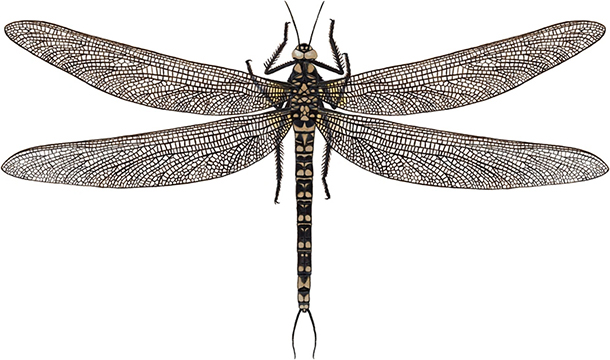 Facts About the Largest Dragonfly-Like Insect
Facts About the Largest Dragonfly-Like Insect
Although Meganeuropsis resembled modern dragonflies, its classification places it closer to a group of extinct insects known as griffinflies. The name ‘Meganeura’ translates to ‘large-veined,’ referring to the distinctive venation patterns in its wings. Unlike the delicate wings of today’s dragonflies, Meganeuropsis had heavily veined wings with reinforced cross braces, providing strength for its large frame.The mating behavior of these insects is believed to be similar to that of present-day dragonflies, with males using specialized appendages to grasp females during reproduction. However, it’s unlikely such giant insects could survive in modern atmospheric conditions, and this change in oxygen levels may have been a significant factor in their extinction.
 Anatomy and Habitat of Meganeuropsis permiana
Anatomy and Habitat of Meganeuropsis permianaBelonging to the order Meganisoptera and commonly referred to as a "griffinfly," Meganeuropsis permiana is considered the largest known insect in history. It lived during the Artinskian stage of the Early Permian period, approximately 290 to 283 million years ago. This insect's wingspan ranged from 28 to 75 centimeters (11 to 30 inches), and its body size was estimated between 17 and 43 centimeters (7 to 17 inches). The massive wings were supported by a network of strong veins, which provided the necessary strength for flight.Like modern dragonflies, Meganeuropsis likely hunted by flying swiftly and grabbing prey mid-air, using its sharp leg spines for grasping. Its large eyes would have been advantageous for spotting potential prey from a distance, and its formidable size made it an apex predator among ancient insects and small animals.Why Did Meganeuropsis Grow So Large?
Theories suggest that insects of the Carboniferous and Early Permian periods, such as Meganeuropsis, were able to grow so large primarily due to higher oxygen concentrations in the atmosphere, estimated at around 35% compared to today’s 21%. This allowed their tracheal breathing system, which relies on passive oxygen diffusion, to function more effectively, permitting larger body sizes.Extinction of Meganeuropsis
Despite its dominance in the ancient skies, Meganeuropsis became extinct around the end of the Permian period, approximately 252 million years ago. The reasons for its Extinction are thought to be a combination of factors, including declining oxygen levels, climate change, and competition from early birds. As the oxygen levels decreased, the environment could no longer support such large-bodied insects, leading to their disappearance.
 Facts About the Largest Dragonfly-Like Insect
Facts About the Largest Dragonfly-Like InsectAlthough Meganeuropsis resembled modern dragonflies, its classification places it closer to a group of extinct insects known as griffinflies. The name ‘Meganeura’ translates to ‘large-veined,’ referring to the distinctive venation patterns in its wings. Unlike the delicate wings of today’s dragonflies, Meganeuropsis had heavily veined wings with reinforced cross braces, providing strength for its large frame.The mating behavior of these insects is believed to be similar to that of present-day dragonflies, with males using specialized appendages to grasp females during reproduction. However, it’s unlikely such giant insects could survive in modern atmospheric conditions, and this change in oxygen levels may have been a significant factor in their extinction.

